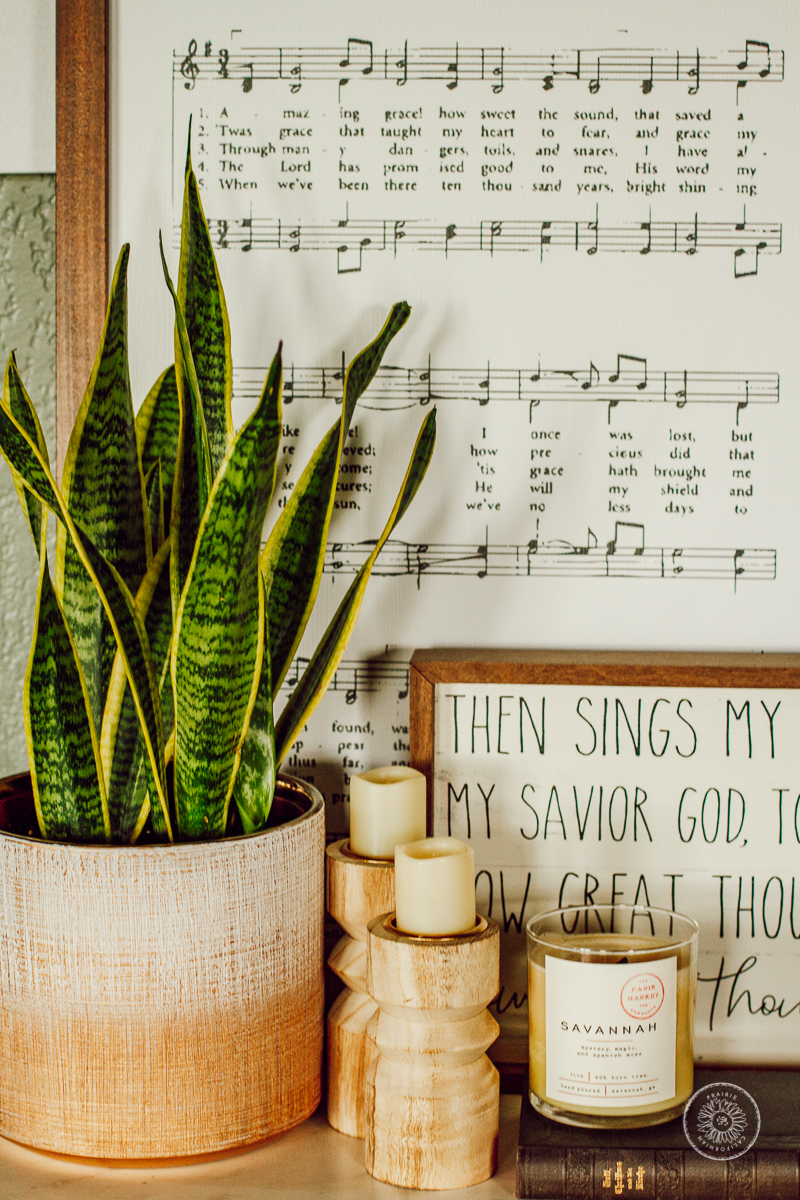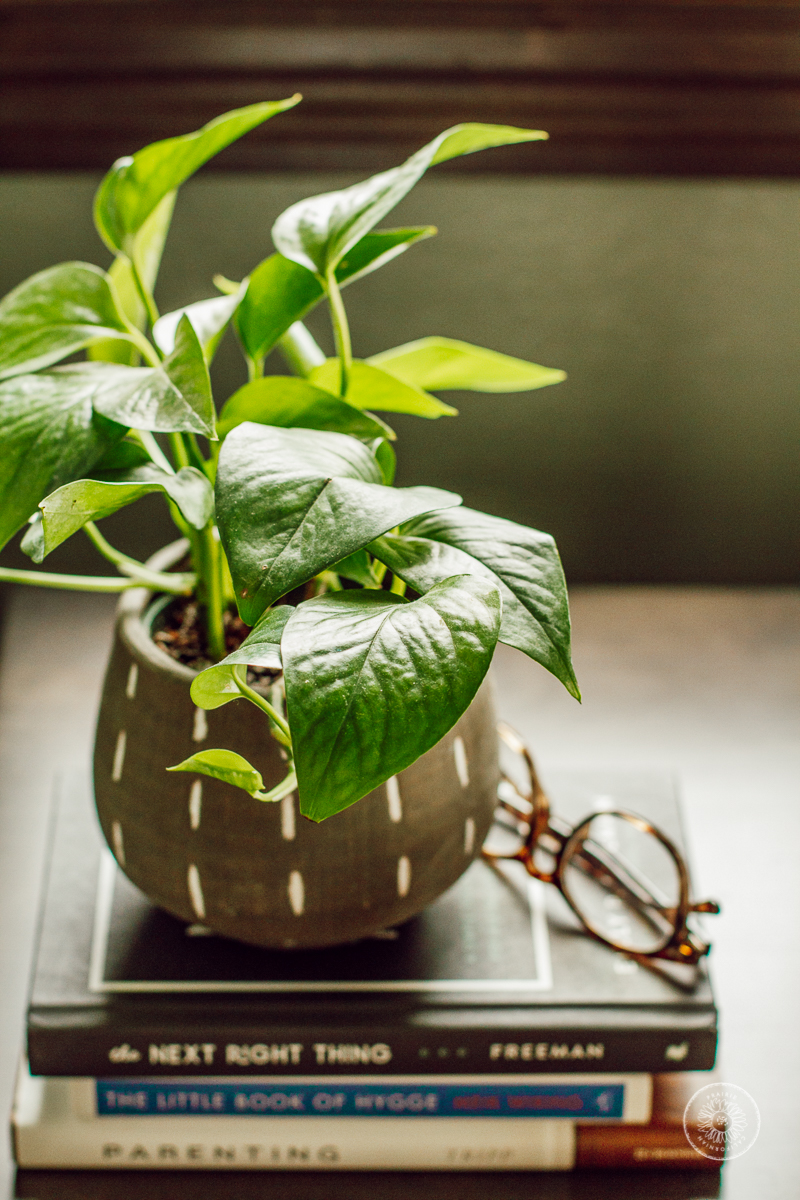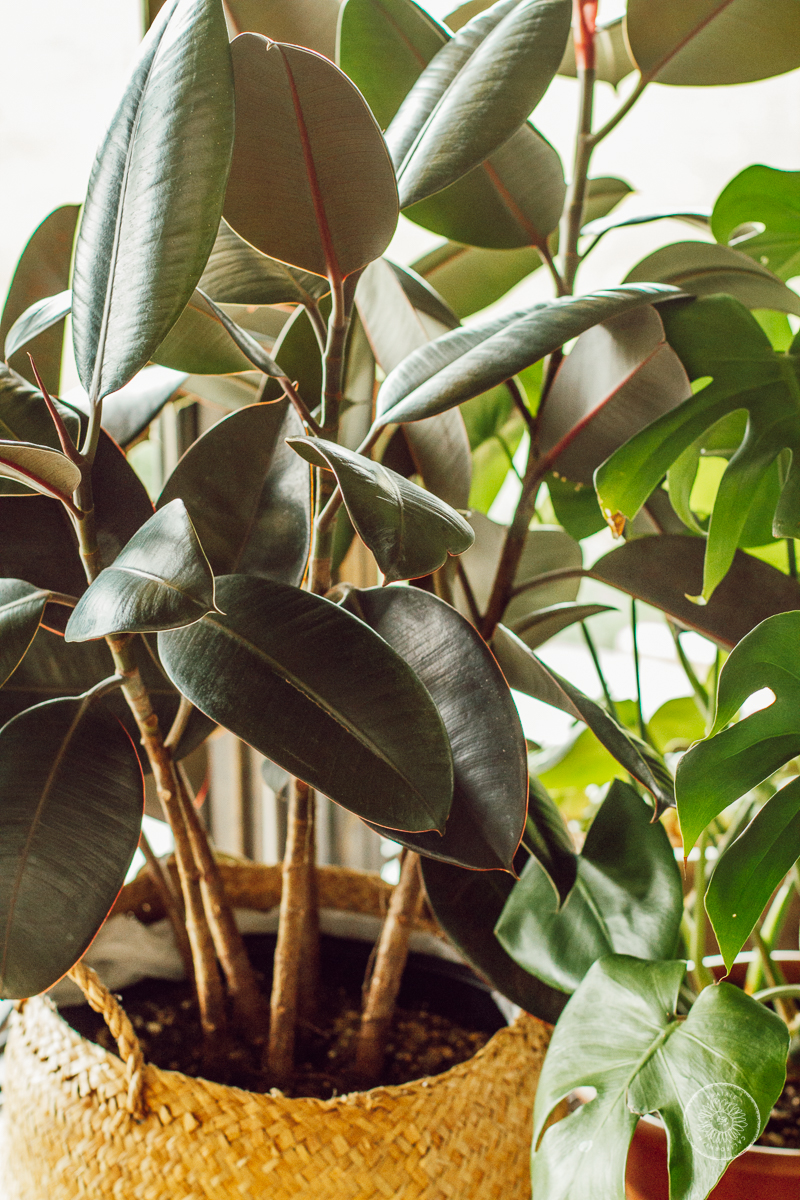
A couple of years ago, I identified myself as the ultimate black thumb. I always told myself that I would kill everything I tried to grow. Then I decided I was going to try growing a garden. It was, by all means, a pretty decent success. Then I decided to plant some flowers on our patio.
Next thing I know, I am buying myself more houseplants and before we all knew it, I have now become a crazy plant lady. It is amazing to me whenever I water all my houseplants to think about the length of time at which I have had them. My first, a housewarming gift when we moved into our new home, will have been with us for six years this summer. But what is even more amazing to me, is that a self-proclaimed black thumb turned into a plant-loving lady.
If I can grow plants, you can too. They bring me so much joy and add life into any space. So, I wanted to share my best tips for houseplants as well as some great beginner plants.
Look at light considerations
The first thing you’ll need to consider when adding a plant into your home, office, etc. is where will it go and what are the light conditions in that space? There are a lot of houseplants that do well with less light, but a lot of them require a lot of bright light too. It is fairly simple to figure out which plants require a lot of light and which ones don’t – many of the online retailers will list the “care needs” to make it easy for you. If they don’t, a simple Google search can help you too.
When I first started out with houseplants, I chose the sunniest place in my house to put all my plants. Now that I feel confident with keeping those plants that get the most sun alive, I have moved on to putting plants in places with less light. And much to my surprise, they’ve been doing just fine. Essentially, the further from the window you get, the less light the plant will soak up and you’ll need a plant with less light requirements in order to thrive there.
Due to the climate of where we live, even indoors, my succulents seem to often struggle through winter. They just don’t receive enough warm, hot sunshine that they love spending their entire life inside. In order to combat this, I put my succulents or cactus outside during the summer and once any chance of frost is gone. I feel like they overwinter and live so much better when they receive that summer sunshine versus spending the entire summer inside. I will also put any tropical or warm climate loving houseplants outside for the summer as well.
Water when needed
A lot of people will tell you to water your plants on a schedule, but I tend to find especially with plants like succulents, it is better to water when needed. It is easy to overwater plants if you are routinely watering say every week versus as needed. In order to check if a plant needs water, you’ll want to stick your finger 1-2 inches into the soil and check for dampness or wetness. If it is dry, it is time to water. Wet-loving plants like ferns may need water once the soil surface dries. For desert plants like succulents and cactus, let most of the soil dry before watering. To help me remember, I set a reminder on my phone to check my plants every weekend, but honestly, now I am always looking at and tending to my plants anyway I remember to water as needed without a reminder.
With time, you’ll start to notice which plants will suck up and utilize water much faster than other plants will. I have a couple of plants that don’t require water every week and some that require water weekly – it all depends on the plant. I have also noticed in our house, the season really makes a difference in how much I need to water. Over the winter when it is dry and less humidity in the air, I need to water more often than in the summer.
Let plants soak up water from bottom & drain
My mom always told me the best way to water your houseplants is to let them soak in a sink or bowl full of water until the soil is moist or wet, take them out, and then let them drain. I’ve noticed a huge difference in my plants when I water them this way versus running them under a faucet until the water runs out the bottom. Letting them soak up the water really gets the soil and roots saturated and lasts much longer than simply running them under the water. Soaking the plants versus running them under the water also helps maintain nutrients in the soil versus washing them away with every watering.
Some smaller plants you can water with a saucer or in a small shallow dish. Most of my plants in the kitchen I’ll water like that. For plants in our bathrooms, I’ll fill the sink up and soak them while I shower or give Levi a bath and then let them drain on a washcloth or hand towel. A pro tip I’ve recently read is filling up the bathtub with a couple of inches water and soaking several plants at one time. This is a great idea for larger, harder to water plants in bigger pots.
Try to re-pot annually
At some point depending on how large your plant has grown and what size container it is in, the plant will require being re-potted into a larger container. This will help give the roots some more room and keep them from getting root bound. However, re-potting doesn’t necessarily mean putting it into a larger container. It is a good idea just to refresh the soil once a year too. This helps with adding new nutrients to the plant.
A Planting Hack
One of the first things I ran into when I started with houseplants is finding planters or pots I liked that didn’t cost an arm and a leg or had a hole for drainage. And what about baskets – how do people put these awesome plants in baskets? Here’s how.
You plant them directly into a plastic nursery container or a cheaper pot AND THEN you drop the plant + pot it into a basket, container without drainage, etc. This seems like common sense, but I hadn’t thought about it until one of my friends recommended it. This has helped me utilize things like cream cans, baskets, or other vintage items that don’t have drainage or I don’t want to plant directly into.
Top Picks for Beginners

Pothos
Pothos is such a fun plant with its cascading vines and leaves. There are several varieties of Pothos, some with marbled or silver leaves. But the best part is that it is SUPER easy to care for. Pothos don’t require a lot of sunlight which makes them great candidates for most places in the home. They also like to dry out completely before watering again so they are very hardy for a beginner who maybe doesn’t remember to water as often.

Snake Plant
The Snake Plant, often called Mother-in-Laws Tongue have become super trendy lately and can be seen EVERYWHERE you turn. It is a succulent plant characterized by its upright swordlike leaves. Snake plants thrive in medium to bright light, but they can also tolerate low light as well. Since they are a succulent type plant, they only require water about every 2 weeks and also prefer to dry out between waterings.

Rubber Tree
The Rubber Tree is a variety of ficus which used to be insanely popular in the faux plant market. Faux ficus were everywhere back in the day. The Rubber Tree thrives in medium light conditions. It grows extremely quickly which helps to see visual progress when you are new to growing plants. And it enjoys drying out between waterings. My Rubber Tree has easily doubled in size since I have had it and has been consistently healthy and easy to take care of.
My Entire List of Houseplants
I get a lot of questions about what types of plants I have in my house and office. Here is a full list of the plants in my collection as well as my current wishlist for new additions.
Kalanchoe orange – my first plant given as a housewarming gift
Rubber Tree
Bromeliad
Monstera
Pothos Jade & Pothos Marble
Snake Plant Zeylanica & Snake Plant Laurentii
Rabbit’s Foot Fern
Lemon Button Fern
Bird’s Nest Fern
Peace Lily
Assorted Succulents
Calathea Medallion
Current Wishlist
Boston Fern
Jade Plant
Christmas Cactus
Silver Satin Pothos
Angel Vine or String of Hearts
Besides giving the plant enough light it requires and making sure you keep it watered to its requirements, there isn’t much else to keeping houseplants alive on a daily basis. Most plants are pretty great at showing you if something is wrong, I’ve Googled when any random issues have come up.
If I can maintain houseplants, you can too. I have hope for you, even if you are the worst black thumb around. Soon you’ll be a crazy plant lady too!
